‘The merry old land of Oz’ is one of my favorite fantasy worlds. The modern American fairy tale is one of the largest book series in children’s literature, spanning over 43 canonical books. This excludes the films, stage productions and other story adaptions of recent years. With so much material I could easily write an entire book in which I delve deep into, The Wonderful Land of Oz, and the vast array of characters L. Frank Baum created. It felt impossible for me to do any justice to L.Frank Baum’s Oz in a simple review. Therefore, I have decided to reflect on some themes and topics closer to my heart. I will break these down into the following:
- The significance of Oz on a personal level
- The significance in LGBTQ culture
- The significance of Oz: Politically
- The best of Oz
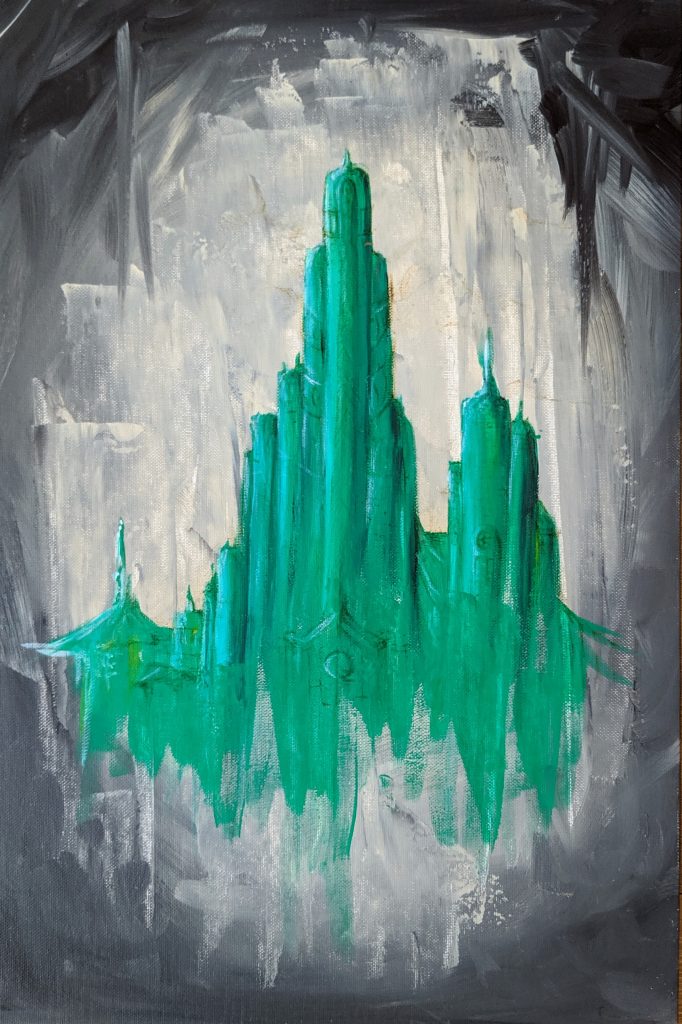
The significance of Oz on a personal level
When I tell people I’m a writer people ask me the same question; what is my all-time favourite book? There is never any doubt in my mind when I answer The Wonderful Wizard of Oz. Ironically, my best-loved book is also my favourite movie. By this I mean I adore the MGM film The Wizard of Oz, 1939. Perhaps that is a tad un-original to the common observer, but both incarnations of this story moulded my love of fantasy and creativity.

Of course, MGM’s The Wizard of Oz is an almost entirely different thing in comparison to the children’s book The Wonderful Wizard of Oz. Those who are familiar with both versions can point out key differences. For example, Dorothy Gale being considerably younger in the book or the transition of magical silver shoes to ruby slippers.
Regardless of their differences, I adore both versions of this timeless American fairytale. The MGM movie manages to evolve itself past the source material, by giving us a wicked witch with green skin, an array of beautiful songs, and some iconic costumes that have become embedded as our vision of Oz. Whilst the sets have aged in a millennium of CGI, Judy Garland’s performance as ‘Dorothy the small and meek’ still manages to capture new audiences even to this day.

I first discovered the land of Oz via the movie, but my love of Dorothy’s adventure’s delivered me to the Oz books, and into literature in general. It can all be blamed on my obsessive brain. From the moment I had seen the movie, I was absolutely obsessed with The Wizard of Oz. As a toddler, I created an ABC book on the characters in the story to help me learn. Later on, in my infancy school, my teacher spent an entire school term on Wizard of Oz. This is was to help me feel more engaged in lessons. I soon fell in love with the English class when we read abridged versions of the book.
Once I realized there was a book about Oz I wanted to read more about the magical land of talking lions and walking scarecrows. When I first read L.Frank Baum’s book I felt like I was rediscovering the story all over again. It was such a delight to learn there was more to the story. It was a tale where Dorothy travels the land of oz for weeks with terrific adventures that are emitted in the MGM film. Suddenly following the yellow brick road leads to facing the terrifying Kalidas, or leaping across grand ditches on the back of the lion. The landscape became larger with new characters to discover including the dainty China Princess.
My favourite moment was learning why the Tinman wanted a heart. For anyone who is only familiar with the Tinman via the movie by MGM, you might be surprised to learn he actually had a motive. In brief, the tinman had once been human in love with a munchkin maiden. Yet this angered the witch of the east who enchanted his axe to keep cutting off parts of his body forcing a tinsmith to replace his severed limbs with tin. He kept returning to his trade of cutting trees until he loses all his human parts, including his heart making him entirely out of the tin and alas unable to love.
After I devoured the book, I fell in love with literature. It was magical to learn there were more Oz books and I became desperate to read the rest of the series. Unfortunately, in the United Kingdom during the late 90s, no bookshops stocked the rest of the series. I could only ever find The Wizard of Oz. However, I became resourceful and found a website where I could read the entire book series for free. So whilst others were video playing games, I was reading online. Usually, making my eyes blur from reading on a questionable white screen until it made my headache.
I was hooked to reading the books. L. Frank Baum managed to create wonderful worlds and great character’s. I was able to visualize most of it without the illustrations. There were some great additions to the story creating enduring characters, the Hungry Tiger, Tik-Tok and Scraps to name a few. The writer managed to create shocking revelations. For example, I remember being surprised to learn the wizard was not the original ruler of the Emerald City. This, of course, makes sense given the context of his story in The Wonderful Wizard of Oz, yet discovering there had been a royal family of Emerald City, and a rightful ruler named Ozma was a stroke of creative genius.
L. Frank Baum was also fantastic at listening to his audience. Each new Oz book begins with a personal letter from the author addressing his fans, who would write to him asking questions regarding their preferred characters. When Dorothy was missing from the second book, he bought her back to Oz with a talking chicken. Soon after the children inquired what became of the wizard after he departed on his ballon so he wrote the wizard back into the books. Last but not least when he tried to end his book series with The Emerald City of Oz, he succumbs to the pleas of fans and wrote more books. The writer was ahead of his time creating a huge fanbase by interacting with them. L.Frank Baum went on to refer to himself as ‘The Royal Oz Historian’, recounting his tales as if Oz was a real place. Today this dedication to loyal fanbase could be simply done via the internet. I remember this made me wish to become a writer myself, initially wanting to become the new Royal Historian of Oz.
When my dad found out I was spending all my computer time reading the Oz books he decided to get the books for me. He had managed to buy them on amazon getting them imported from the USA. I had recalled the awe at having books shipped over from the USA, it was as magical as the silver shoes.

Christmas would be an exciting time because it meant getting to see the illustrations for the books adding more vibrancy to the world of Oz. My family knew it was always a safe bet to buy me anything related to The Wizard of Oz. One present I always recall with fond memories came from my mother. She had bought me this special edition, video-cassette boxset, of the MGM movie. It included a separate video called The Making of The Wizardizard of Oz, (this was the days before DVD’s had special features). The boxset also included a copy of the original script which I would often read aloud acting out the parts. The Oz collection would end up building throughout my life, including many of the film adaptations, from Return to Oz, The Wiz or Tin-Man .
If there is a particularly bad week I will usually stick on The Wizard of Oz and escape back to the simplicity of childhood. A time when there really was ‘no place like home’. It is safe to say without The Wizard of Oz, I would not have developed a love for literature and writing. I can only be grateful to the genius writer who gave me the inspiration to create magical worlds of my own.
The significance in LGBTQ culture
The Wizard of Oz has become the quintessential LGBTQ icon of the vast fantasy genre. Whilst much of this is due to the MGM movie, you can find many iconic gay moments in the book series written over 100 years ago.
I often joke that L. Frank Baum knew to pair a blue dress with silver shoes rather than red heels with socks. After all red clashes with blue as so many of my girlfriends told me. However, in all seriousness, the books offer some remarkably LGBTQ moments.
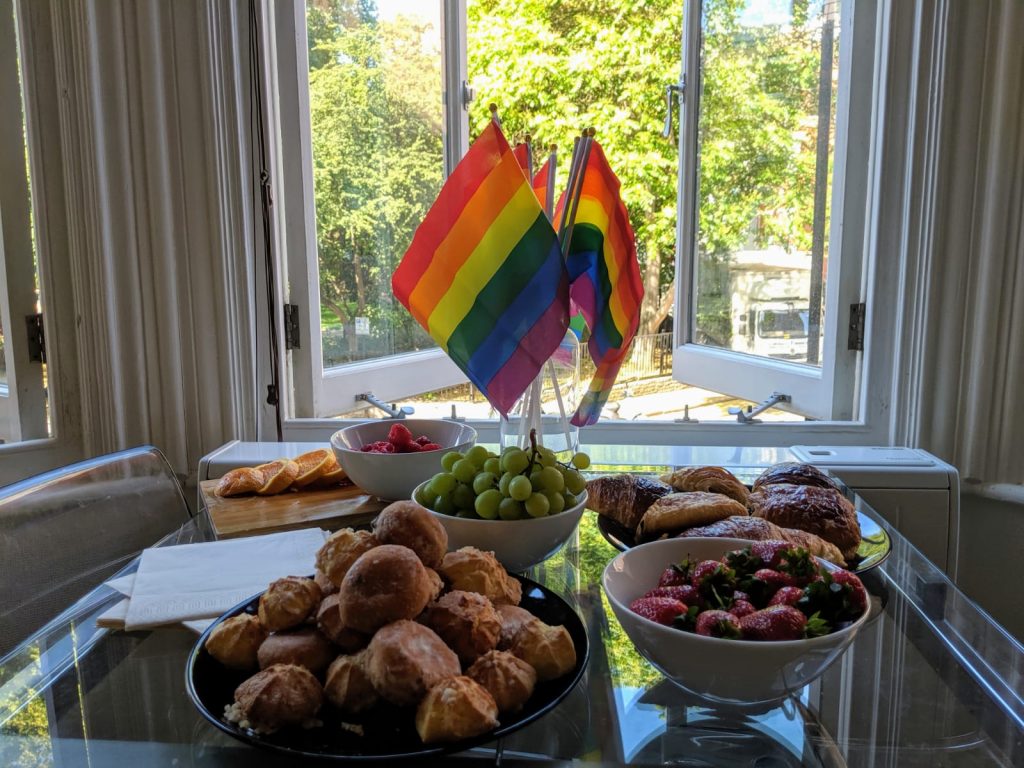
What always stood out to me as a child was the large array of female characters. It’s one of the few fantasy book series with a strong female-focused cast of characters, especially when compared to other book series of that time. I grew up in the days of Buffy the Vampire Slayer, and strong female leads were always infinitely more interesting to me than the stereotypical concepts of a macho man being the hero. What makes this more impressive it the book series was written well over 100 years ago, back when ideals of masculinity and femininity were set in prehistoric stone. Dorothy going on these grand adventures must have made many girls and boys feel drawn to her. I always appreciated her assertive nature whilst retaining her innocence in the face of adversity. She never vanquishes evil willingly or seeks out anything out of greed.
In later books, audiences where introduced to more female leads. From a feisty chicken who would prefer to be called Bill over Billina and to a patchwork girl who refuses to adhere to the idea, she was created purely to be a slave, instead running off on a grand adventure.
However, for me, the storyline that stands out a mile as LGBTQ is the storyline of Ozma/Tip the rightful ruler of Oz.
We first meet Tip in the sequel book ‘The Marvelous Land of Oz’. The young boy Tip is a slave to a wicked witch named Mombi until he resolves to run away with her magical ‘powder of life’. He goes on a grand adventure only to discover he is actually a girl enchanted into a boy’s body. Ozma is the rightful ruler and queen of Emerald City, her family was killed or disposed of during the arrival of the wizard. (It is not clarified how the family was deposed and the wizard returns in later books unscathed by this piece of history). The wizard had taken baby Ozma to Mombi where she would be raised as a slave under the guise of a boy to prevent her from taking the throne.
There are certainly elements of transgender identity touched upon. Especially, the very literal revelation that Tip is living in the wrong body. Interestingly, Ozma initially rejects becoming a girl claiming she feels more comfortable as a boy. This strange dynamic is quickly dropped when she adapts to her body as a girl. Nevertheless, there is certainly a storyline that touches on transgender issues. What makes it all the more fabulous is how tolerant the world of Oz is. The public accepts this new transition happily. Whilst it does not delve further into this topic one must bear in mind it was written in the 1900s when being transgender could still be punished. The issues regarding feeling uncomfortable in a body you are born into were briefly expanded upon in the NBC 2017 TV series Emerald City. In the TV shows limited run we watched Ozma wanting to return to her form as a boy.
There are several characters in the franchise that also seem to belong to the LGBTQ community, though this admittedly is all hypothetical. To begin there is the Lion and the Hungry Tiger who seem to adopt a shall we say ‘close friendship’ without the need female partners. Then there is the Tinman who sought out a heart for a young munchkin maiden only to forget about her, and instead, he ends up shacking up with the Scarecrow in his very own palace in the west. The Tinman does go on to seek out the maiden in the 12th book The Tinman of Oz, in a rather humorous ‘oops I forgot about that girl’ moment, only to find that she has moved on to a Frankenstein type creature created from his old body parts. Yes, really that is the plot!
In recent years the popular television series Once Upon A Time has taken things further for the LGBTQ communities, by creating openly OZ gay characters. In this incarnation of the story, Dorothy Gale falls in love with Ruby, a werewolf (Little Red Riding Hood), whilst trying to poison the wicked witch of the west. The inclusion of lesbian characters stepped in the right direction for mainstream TV and for future fairy tale stories. It was also the first LGBTQ characters to appear in the series and also allowed screen time for a kiss.
However, if we just take MGM’s The Wizard of Oz movie there is considerable evidence to support its importance in LGBTQ’s history. ‘Over the rainbow‘ has become something of a gay anthem. The gay flag is a rainbow! Let us not forget the lion is a pretty camp character in the movie adaption insisting on having a bow and a hair perm. Indeed during ‘the merry old land of Oz‘, the lion stretches his hand out in a flamboyant manner. Most of the film is a camp-fest of glitter and cheesiness that has been taken on by the gay community.
There was a small period of time in which men could ask one and other if they were gay in code. This was in a time when being gay had to be kept secret but thanks to the wizard of oz, one could ask “Are you a friend of Dorothy’s?” I am unsure of how this originated, but I believe some of this can be credited to the actress Judy Garland, and her portrayal of Dorothy. I myself relate to the need to escape the grey world of small-town minds and make new friends in a colourful metropolitan city.

Judy Garland is the ultimate gay icon. Perhaps gay men can relate to her because of her difficult life in which she was often criticized and torn down by the people around her. It could also be due to the fact that Judy Garland’s life was surrounded by gay men. Her own father was famed for being a closeted gay man and Judy adored her father (in comparison to her cruel mother). Judy obviously seemed to attract the gay men because she married her very own closeted gay men, one fabled to be gay is Vicent Minelli as well as Mark Herron. Judy is also fabled to have frequented gay bars with work colleagues of MGM. It was often noted many of her fans were homosexuals.
Ironically Judy’s daughter Liza Minelli would go on to become a gay icon as well. This might be due to her major role in Cabret, which is the first musical to include an openly bisexual man in the storyline.
On the day of Judy Garland’s funeral on June 27, 1969, the stonewall riots began in NYC starting the movement we all know as Gay Pride. This political movement would spread across the world to allow other’s to protest equal rights. Today it is a celebration of the LGBTQ community.
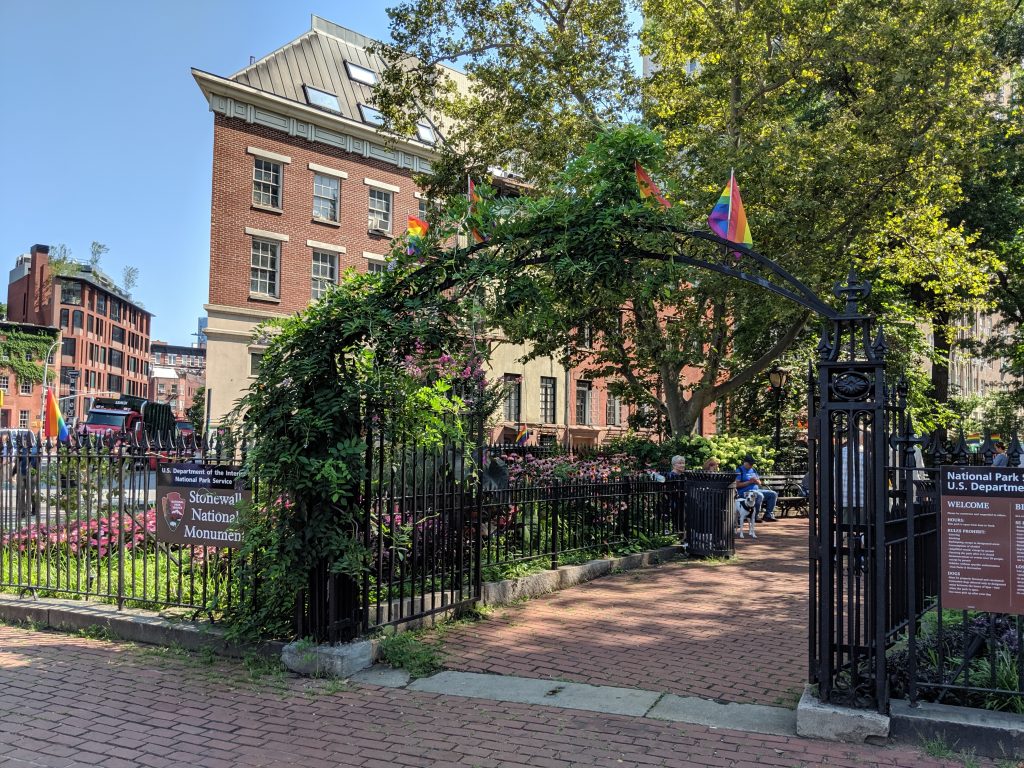
Ru-Paul the world-famous drag queen has publically acknowledged that his favourite story is The Wizard of Oz. He often refers to it many of his podcasts (What’s the T) and on his famous TV show RuPaul’s drag race. Ru-Paul often states how the story has huge significance, he goes into depth saying the journey with your newfound family and friends is how you overcome trials and tribulations. In this analogy he uses the poppy field, comparing it to the dangerous territory of recreational drug use. It takes the friends to assist Dorothy out of the field and help her reach the emerald city. The connections with opium and poppies are expanded upon in The Wiz in which the poppies are part of an evil club run by Evillene.
Naturally, there is another story that has been adored by the LGBTQ community that is also related to Oz. This, of course, is the book Wicked the life and times of the wicked witch of the west by Gregory Maguire which would later be adapted into a world-famous musical. The story celebrates the trials and tribulations of the wicked witch of the west before she supposedly becomes evil. Gregory Maguire went on to write four books that followed on from the death of Elphaba. In the sequel Son of a witch, we discover the wicked witch had a son. During the story, Lirr (son of the witch) and Trism a soldier share a brief romantic relationship.
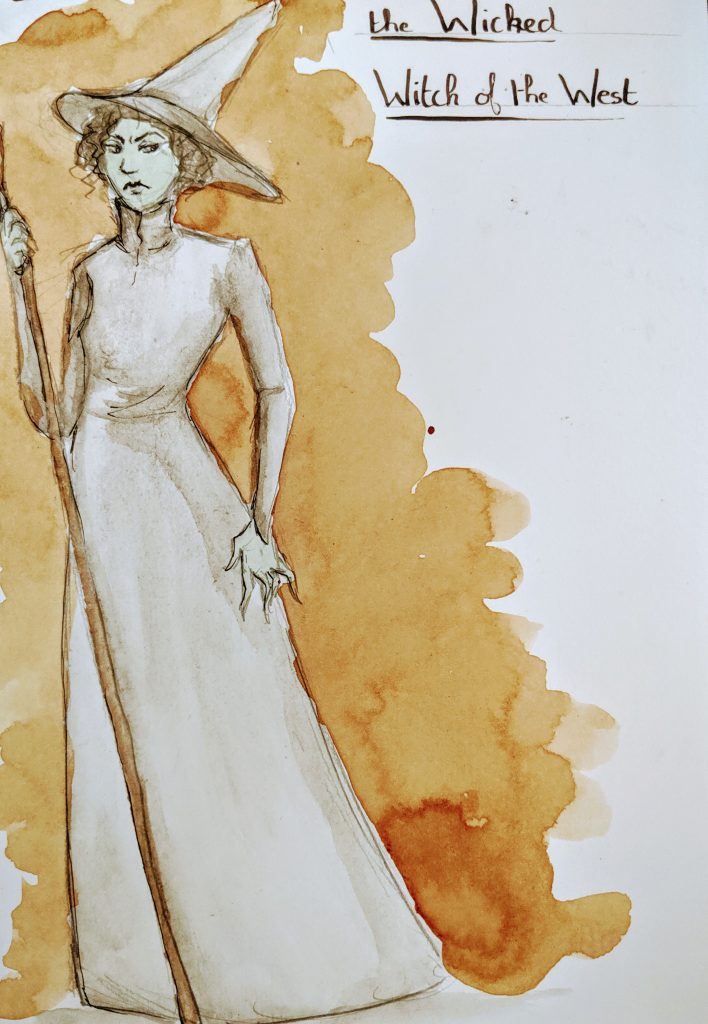
Wicked has become a staple diet in the musical world, originating in New York and becoming a worldwide phenomenon. Not only does the story touch on topics such as the judgment of someone becomes of their skin colour, but also the difficulties of being an outsider in your family. Idina Menzel who starred as Elphaba on broadway and west end has a large gay following of her very own. Idina Menzel has an impressive broadway career. One of her more famous roles involved playing the lesbian/bisexual Maureen in Rent before she charmed us all as Elsa in Frozen.
It is odd how I fell in love with, The Wizard of Oz, long before I would ever know I was a gay man. I definitely felt confused growing up and escaping into the fantasy of books and movies was often great assistance. Nonetheless, it is ironic that my favourite movie and book series have become embedded in the LGBTQ community. It has made me feel even more attached to the book series.
The significance of Oz: Politically
The Oz series has many political metaphors/layers buried into the story. There have been many analyses of L. Frank Baum’s work. Most famously noted is a section in ‘The Emerald City of Oz’ that lends to socialist/communist ideals.
‘There were no poor people in the land of Oz because there was no such thing as money, and all property of every sort belonged to the Ruler. Each person was given freely by his neighbors whatever he required for his use, which is as much as anyone may reasonably desire. Every one worked half the time and played half the time, and the people enjoyed the work as m0ch as they did the play because it is good to be occupied and to have something to do. There were no cruel overseers set to watch them, and no one to rebuke them or to find fault with them. So each one was proud to do all he could for his friends and neighbors and was glad when they would accept the things he produced.‘
As a child, I viewed this as a very nice idea and if you take Karl Marx’s ideas at the core it can be interpreted as this utopian society. Yet, in reality, corruption and countries owned by one supreme ruler don’t really measure up. This segment contradicts the first book in which the people pay with green pennies in the Emerald City. I personally think this could be historically possible in the evolution of Oz. In the first book, we have a modern capitalist society, but after the wizard’s departure, the scarecrow is left on the throne unable to rule. There is ultimately a revolt from the woman of the city tired of male supremacy. When Ozma is throned the rightful queen of Oz the power dynamic of the land settled because she is rightful ruler and also a woman. Supposedly, everyone loves the new queen and is able to move into a cashless society.
However, if we just focus on the first book there is a lot of political undertones. The wizard was part of a capitalist society in the USA incorporating his ideas of ruling onto the new land he inhabited. The fact that the wizard runs the emerald city yet in truth he does not know what he is doing is certainly relatable in politics. The man behind the curtain is certainly a great metaphor. Dorothy has spent her time in Oz under the illusion the wizard can fix everything. When she finally peers behind the curtain she realizes it is all a lie. I myself have often found myself wondering, ‘Is that it?’ the further I venture down my own yellow brick road. The wizard is the definition of a humbug a man who hides behind the glamour of his own city and the illusions he creates. Then sending assassins to kill his opposition rather than deal with the issues himself.
We get to see the ideas of leader corruption in the spin-off book series that was published in 1995. This was in the fabulous book; Wicked the life and times of the wicked witch of the west by Gregory Maguire. This is a masterpiece of creative craft and was one of the earlier prequel stories that are told from the villain’s perspective. In this story, we can see the world of Oz pre-Dorothy which is raw and run by propaganda created by the wizard. It focuses on the idea that Oz is now against talking animals. Elphaba is an activist who becomes an enemy to the people when she peers behind the curtain. The death of her lover Fiyero leads her to become more erratic in her behaviour. Throughout the end of the book, we learn she is not sleeping well until she is killed by Dorothy.
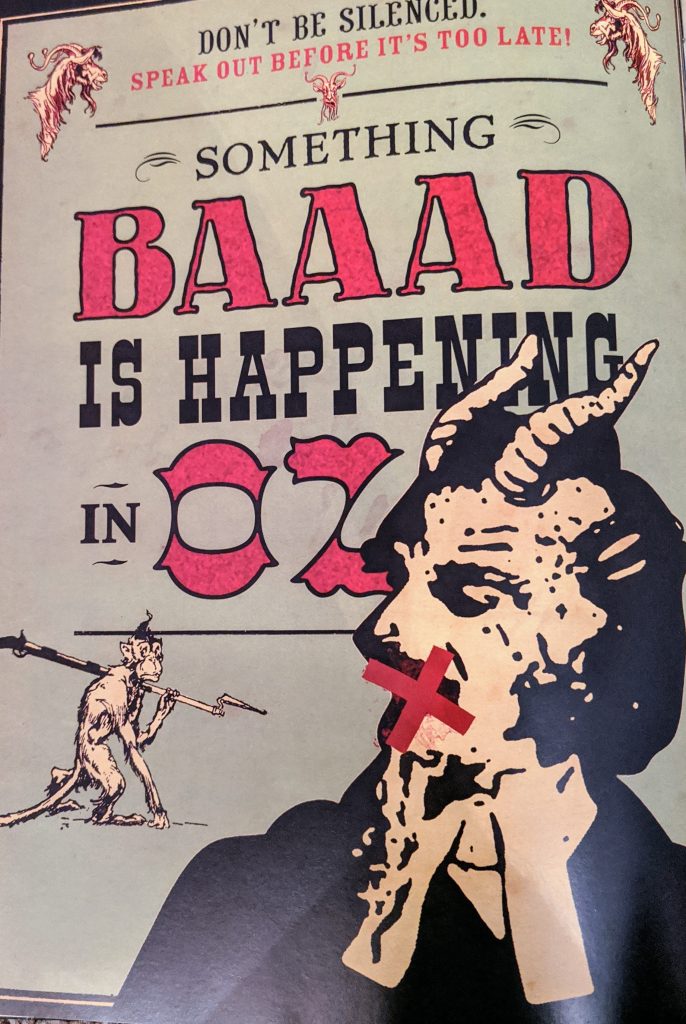
The musical adaptation gives a simpler storytelling approach that is arguably more tear rendering. We get to see a more in-depth relationship form between Glinda and Elphaba. However, it still retains the complex political corruption of society. Showing how Glinda became the face of the people purely because she conforms to the rules set by those in power and she has the pretty face to match. Glinda spends the second act watching events from the sideline. She is surrounded by glamour as her friend is turned into the topic of propaganda. In one very insightful line, the wizard goes on to say the best way to round the people together is to create a common enemy. Indeed reflective of the contemporary world where the public’s hatred is often concentrated to a common enemy.
Wicked has many cultural impacts. The story could potentially be credited for kick-starting the villain’s prequel craze. All because this 90’s novel took Magret Hamiltion’s rendition of a green-faced witch and allowed her to become more two dimensional. The musical and book have become culturally significant in modern storytelling. Maleficent had huge success at the box office and there Disney has since created more storylines that centre around villains including the Disney Channel film series Descendants. Instead of characters who are inherently evil characters tend to have motives or backstory, a good example is again in recent Disney movie villains such as Robert Callaghan in Big Hero 6, or Te Kā in Moana.
The new trend/form of narrative allows young and old to realize that there can be many reasons for people’s behaviour. As Glinda says in the show “Are people born wicked or do they have wickedness thrust upon them?”
Oz continues to be referred to in political studies and often referenced for its cultural importance in articles.
The best of oz
My top picks in the books
1.The Wonderful Wizard of Oz
I have referenced this book several times in this post, so it is easy to see why this is my favourite Oz story. The story holds an important message about believing in ones-self that reflected in the main characters. The idea that you have what you need inside of you to conquer any obstacles. The book is well worth the read if you are only familiar with film adaptions, as it broadens the land and characters. I always enjoyed reading about the journey south to Glinda. Personally, I felt the wizard’s departure seemed a strange place to end the story and was all Dues Ex Machina.
My favourite edition of the book features the WW. Denslow’s illustrations which bring the world to life. Dorothy’s signature look is arguably due to this book. (The classic brown and braided hair.) An interesting fact, in all other illustrations of the Oz series Dorothy, is depicted as a blond girl which I never really liked. Judy Garland was originally supposed to wear a blond wig, but thankfully producers changed there mind.
2. Ozma of Oz
This book takes the fantasy world into the more Gothic territory. I remember reading the book and being so pleased with the return of Dorothy. L.Frank Baum was a wonderful writer because he listened to his fans when the readers became perplexed by Dorothy’s absence in the sequel book The Marvellous land of Oz, he decided to bring her back.
Whilst The Wonderful Wizard of Oz is certainly the story that begins the series Ozma of Oz can be credited for the book that introduces the main villain of the story. The Nome King manages to surpass, the wicked witch of the west, or even Mombi in the sequel book. I believe this is because he has a more intellectual approach that adds an element of realism. It is the way the Nome King gets everyone to turn into statutes by there own accord, or the way he acts very courteous and fair. The Nome King goes on to be the main protagonist for many of the later Oz books.
However, it is not only the Nome King that is sinister, but I also could never forget Princess Langwidere. The princess with a dozen heads that she uses interchangeably. She is one of the most creepy characters in fantasy fiction.
There is plenty of new additions to the book series, from Tik-Tok, the hungry tiger, and Billina to name but a few.
3.The Patchwork Girl of Oz
This book takes a diversion from the usual Oz book narratives. Focusing on new characters in the Land of Oz, who are not part of a grander backstory like that of ‘The Marvellous Land of Oz’. Instead, the reader gets a great fairy tale story regarding a poor munchkin boy named Ojo the unlucky, Scraps the Patchwork Girl and Bungle the glass cat.
The character’s manage to create great visuals, I especially remember the details of Bungle the transparent glass cat with emerald eyes and a blood-red heart. Whilst some of the main Oz character’s make brief cameos in this story The Patchwork Girl of Oz is unique in that it could be a standalone fairy tale story.
4. The Emerald City of Oz.
This book was intended to be the final instalment of the book series. What I remember sticking out to me as a child was the way L.Frank Baum addressed the readers. It was done with such respect by stating he would not be able to write more books as the land was now cut off ‘by magic’ from the outside world.
While this is not the last book, it ties together many loose ends in the already established books. The moment Dorothy finally gets to move permanently to Oz with her Uncle Henry and Aunt Em was one of the most satisfactory scenes in children’s literature. I mentioned before that L. Frank Baum always knew how to respond to what his audience wanted, and this book is a great example. For me the moment Dorothy finally moves permanently into Oz, it gives us a worthy ending.
Throughout the book, there is a sense of terrible foreboding as the Nome King tunnels his way to Emerald City with his army to destroy the emerald city. The mixture between small episodic adventures with Dorothy and her family and the Nome King’s terrible plans is the perfect blend.
My top picks on films
1.The Wizard of Oz (1939)
This film is so iconic that this naturally comes at the top of my list of Oz movie adaptions. There are so many things that make this film so memorable. The cinematic masterpiece of starting in black and white and moving to colour as Dorothy lands ‘over the rainbow’ has still yet to be matched. The fact that every song’s a memorable classic. The fact so much of the film is still referenced in modern popular culture. The film has this 1930’s vibe that is so wholesome it is a perfect match to the tone of the book. Two stories that reflect a different time.
2. Return to Oz (1985)
Walt Disney’s Return to Oz bombed at the box office gaining generally negative reviews, yet the film would go on to become a cult classic. Perhaps in the ’80s people were not ready to accept the fantasy land without the singing munchkins. Personally, I think the film was very ahead of its time and would have gained more favourable reviews with modern cinema-goers if released now. I also feel the film is much closer to the actual Oz books because of its use of some of the creepy characters.
The story opens with Dorothy in Kansas suffering from insomnia. Her aunt and uncle believe Dorothy is unwell as she keeps talking about Oz, and so they decide to take her to a mental institution for help. The asylum is filled with damaged patients as a result of electroshock therapy, but Dorothy can escape with the aid of a new friend. However, the pair end up caught in a rainstorm and fall into the open water running from the asylum. Dorothy floats on a chicken coop into the land of Oz. Once in Oz, she finds everyone has turned to stone, and the city has been taken over by the Nome King.
My understanding is the director, Walter Murch, wanted to stick closer to the books. Walt Disney liked the new approach to the film during storyboards. However, the film kept merging into darker territory during production. Sensibly the director had realised he could not ignore the MGM film which had gained the status of a family classic. The film is clever enough to pay homage to the MGM film by incorporating aspects such as the Ruby Slippers into the story. The director also felt the need to merge the sequel books to insure Dorothy was in the story. Thus, Return to Oz combines two Oz books (The Marvellous Land of Oz and Ozma of Oz) into one story.
Fairuza Baulk, who is famous for her role as Nancy in The Craft, plays the titular role of 11-year-old Dorothy. The casting is again more accurate to the character’s age in the books, and she does a great job in this film.
Most who watched this film as a child is forever traumatised by the wheelers and Mombi’s collection of heads. Unfortunately, critics and moviegoers were not able to accept this new version of Oz which can be credited to its drastic departure in cinematic and storytelling from the MGM film.
Return to Oz is not officially the sequel to The Wizard of Oz film so can it can be considered standalone as a film. Journey back to oz (1972) was supposed to be the official sequel to the MGM film starring Liza Minnelli as Dorothy. However, this animated sequel was also a major failure at the cinema and has become somewhat forgotten.
3. The Wiz (1978)
The film is Motown Production film based on the 1975 Broadway show of the same name. It is a celebration of black culture and it embodies 70’s energy and allows us to Ease on Down the Road. Big stars such as Diana Ross and Micheal Jackson star in the movie and despite opening to mixed reviews has also become a cult classic.
“The Wiz” (1978), directed by Sidney Lumet, reimagines L. Frank Baum’s “The Wonderful Wizard of Oz” with an African American cast and a fantastical New York City setting. It features a contemporary score blending R&B, soul, and pop. Unlike the 1939 MGM classic “The Wizard of Oz,” which takes place in a traditional fairy-tale land, “The Wiz” incorporates modern urban elements and African American cultural themes, offering a vibrant and culturally distinct take on the original story.
The Wiz is certainly to be blamed for my obsession with New York City. Something that has stuck with me from childhood to my adult life. Sealed in a desire to move on day to the big apple.
4. Legends of Oz Dorothy’s Return (2013)
I am perhaps one of the few people that have favourable reviews for this movie. However, I feel this film is judged too quickly and really deserves a chance.
Based on Dorothy of Oz by Roger S. Baum (L.Frank Baum’s great-grandchild), the film follows the story of Dorothy’s return to Oz to save the land from the wicked Jester.
This is one of the first Oz films to be entirely animated in CGI. Despite the fact the animation is not at the highest standard for it’s time the film is still remarkably pretty. I feel the studio was working on a more humble budget then Disney who released their film the very same year.
The film manages to be a great sequel, by making it feel wholesome. The songs in this film add vibrancy to Oz not seen since MGM’s adaption of Oz. My favourite song in the movie is Even Then.
While not every song is brilliant, there are a few toe-tapping numbers, as well as some songs with an emotional punch. If you have seen Journey back to Oz, you will see failed attempts at music numbers. Furthermore, there are poor character choices from the main protagonists of the first film, making you wonder why they were ever Dorothy’s friends.
Leah Michelle who was famous for her role as Rachel on Glee voices Dorothy and she does a pretty stellar job. Once more my favourite character, in this movie is from the dainty china country. I refer of-course to the sassy china princess, who falls in love with Marshal Mallow.
If you have not watched this movie and based your opinion on some of its harsh critiques; I would suggest giving it a try. If you have read the book like me, then you might even find the film surpasses the source material.

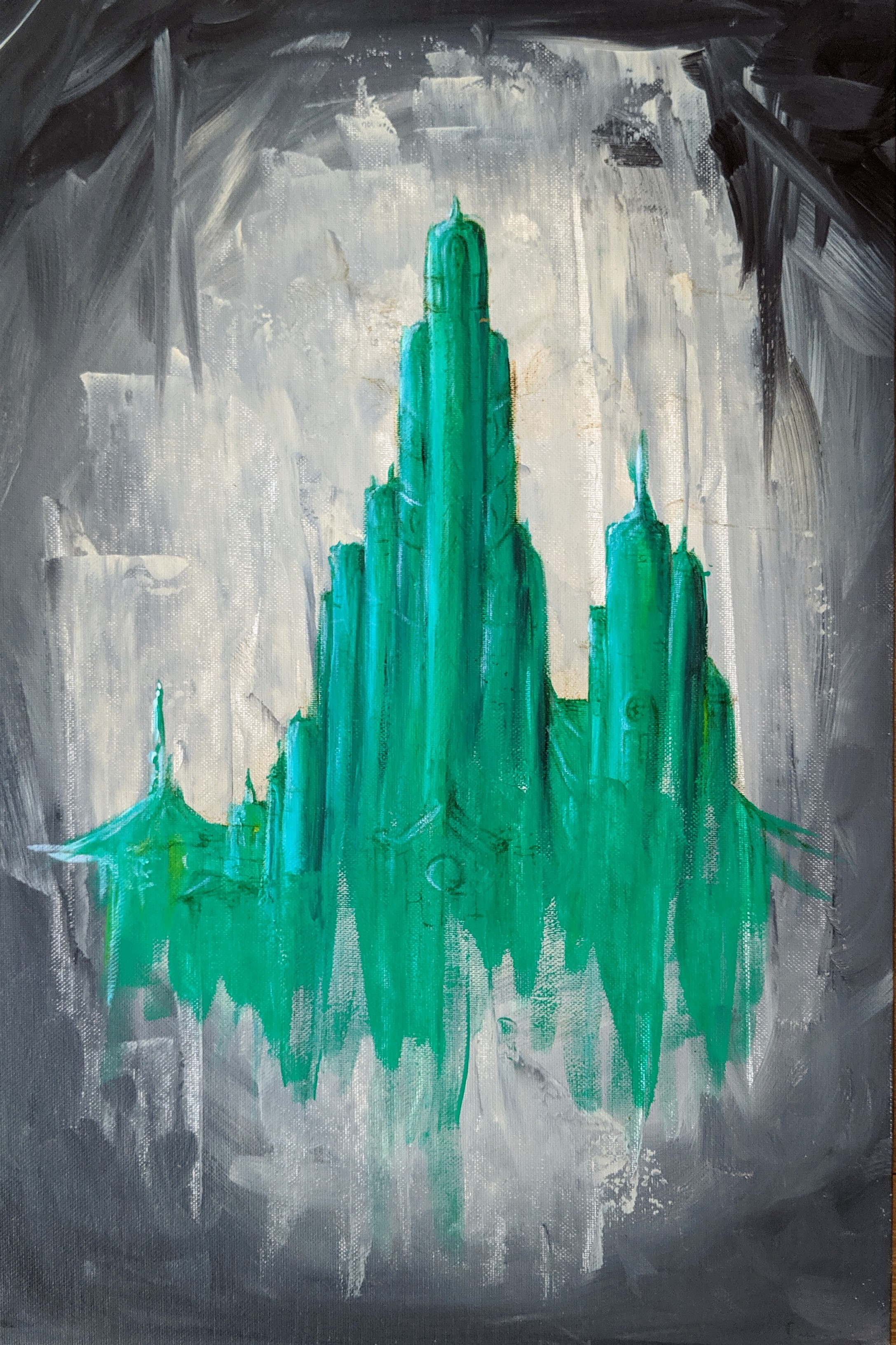

Be First to Comment